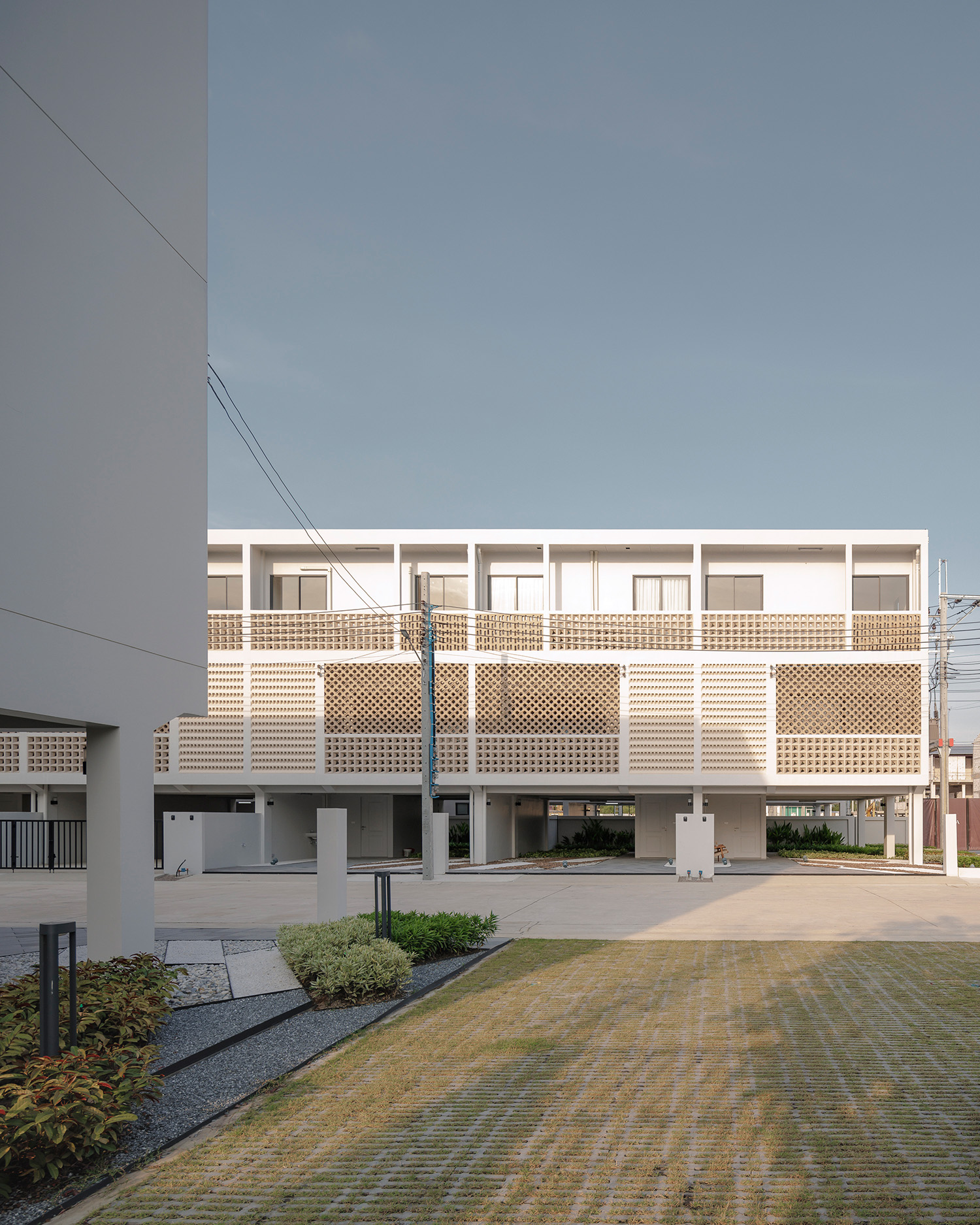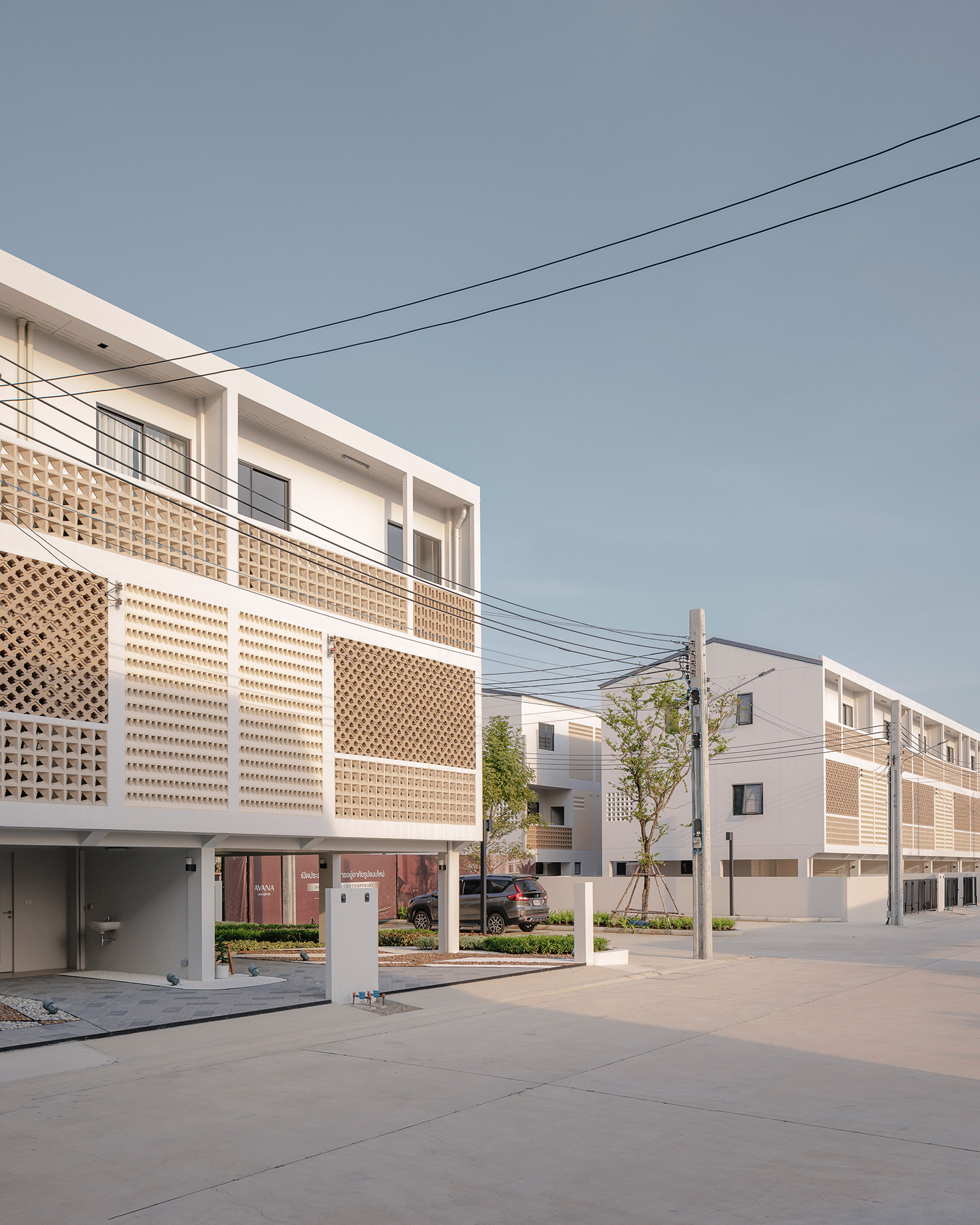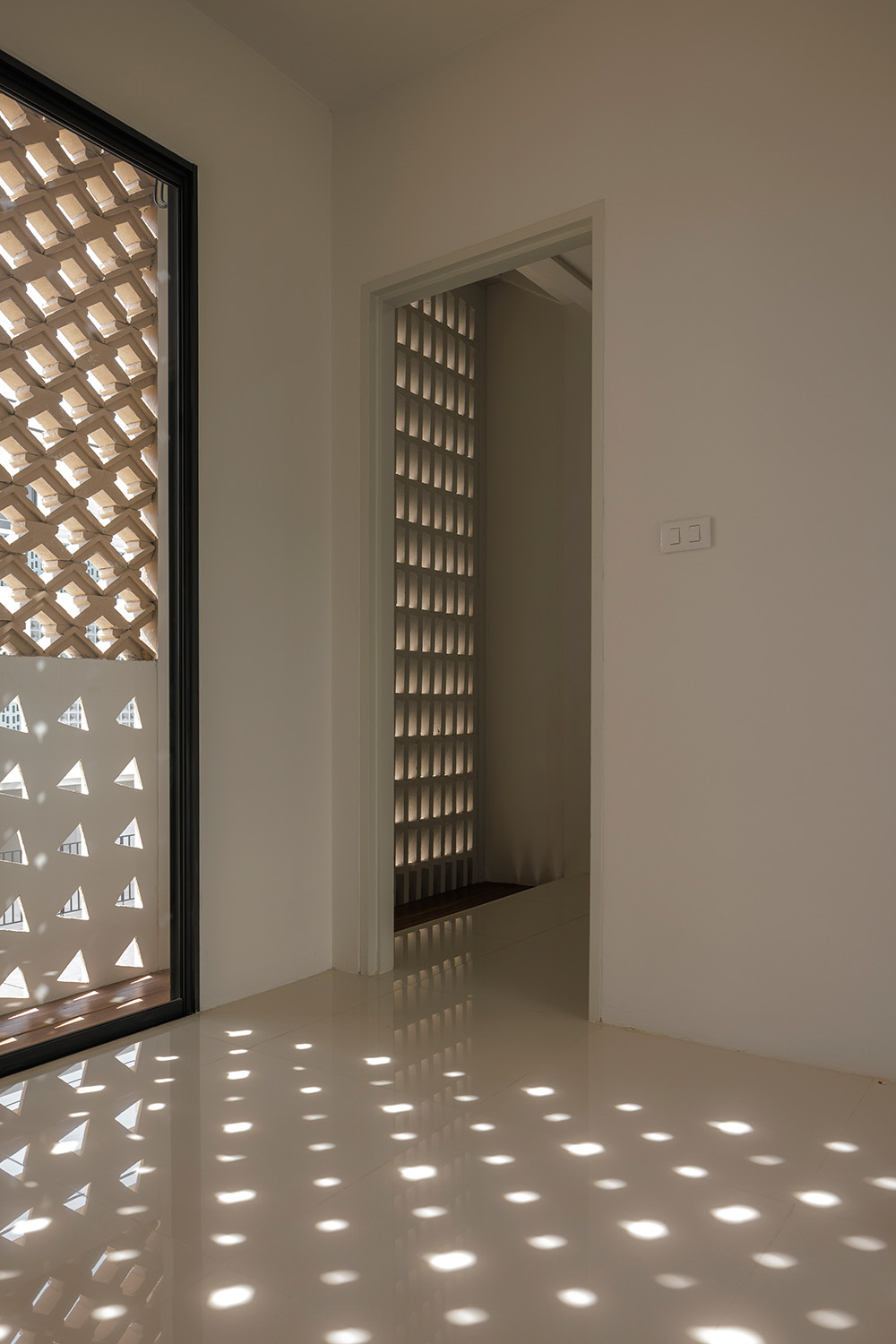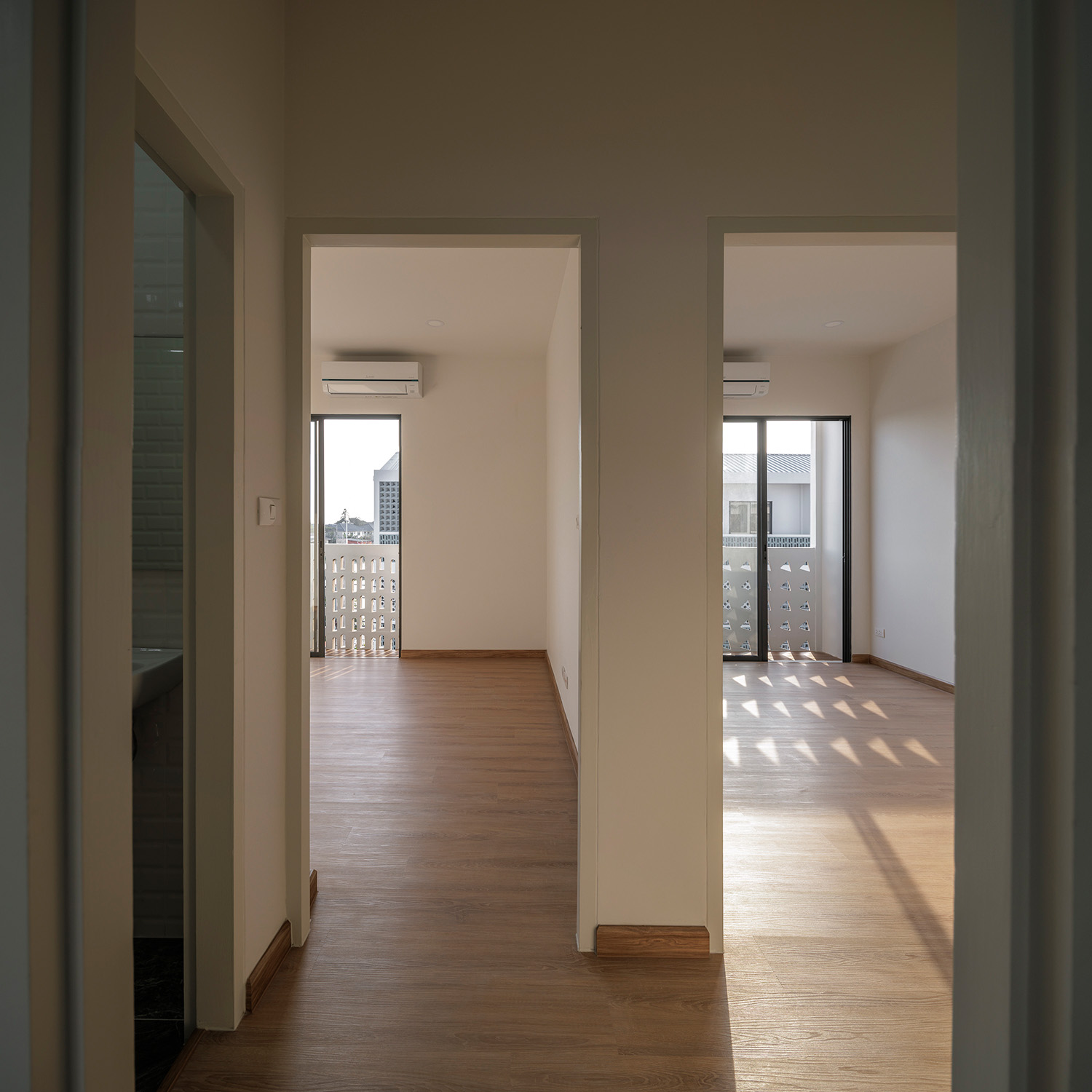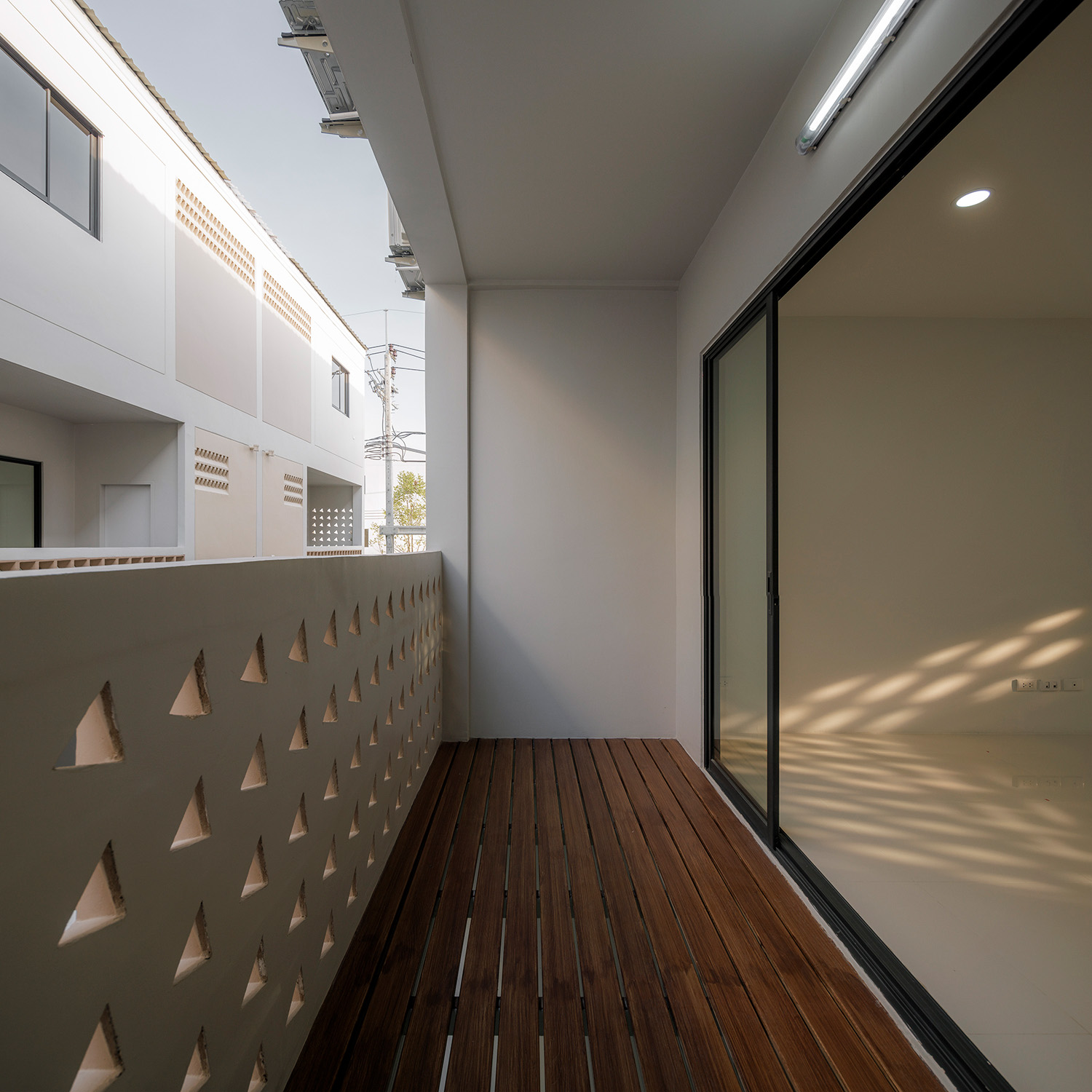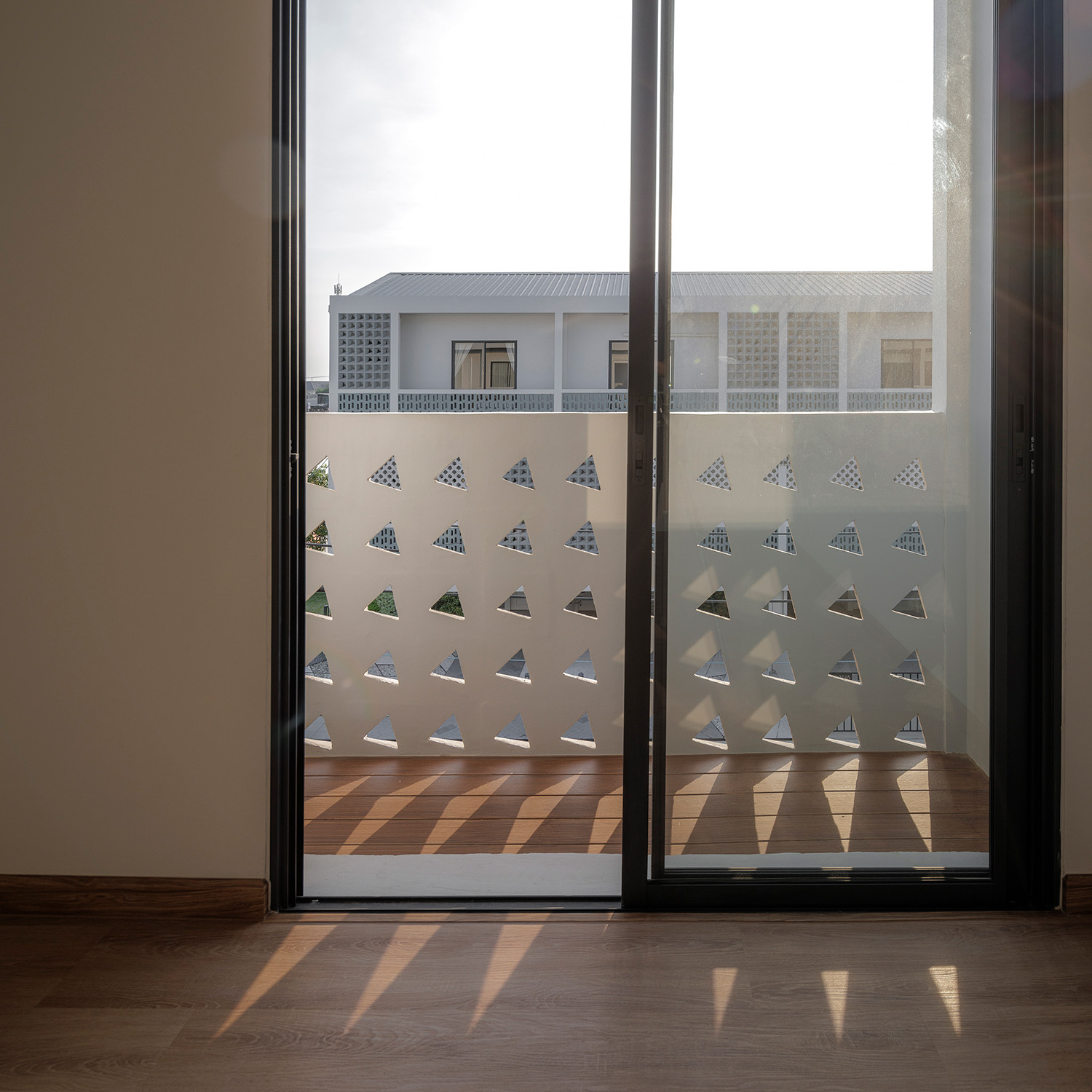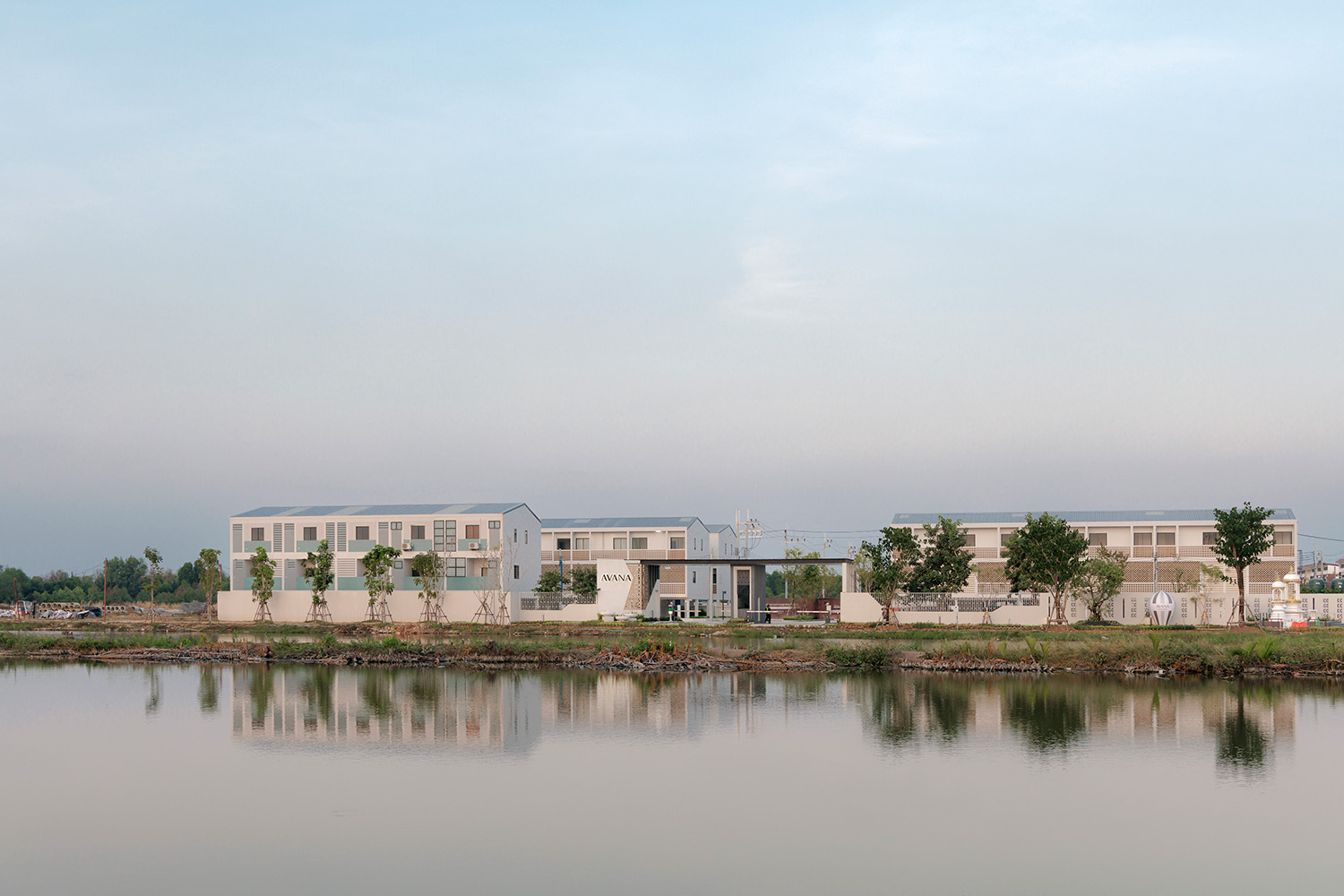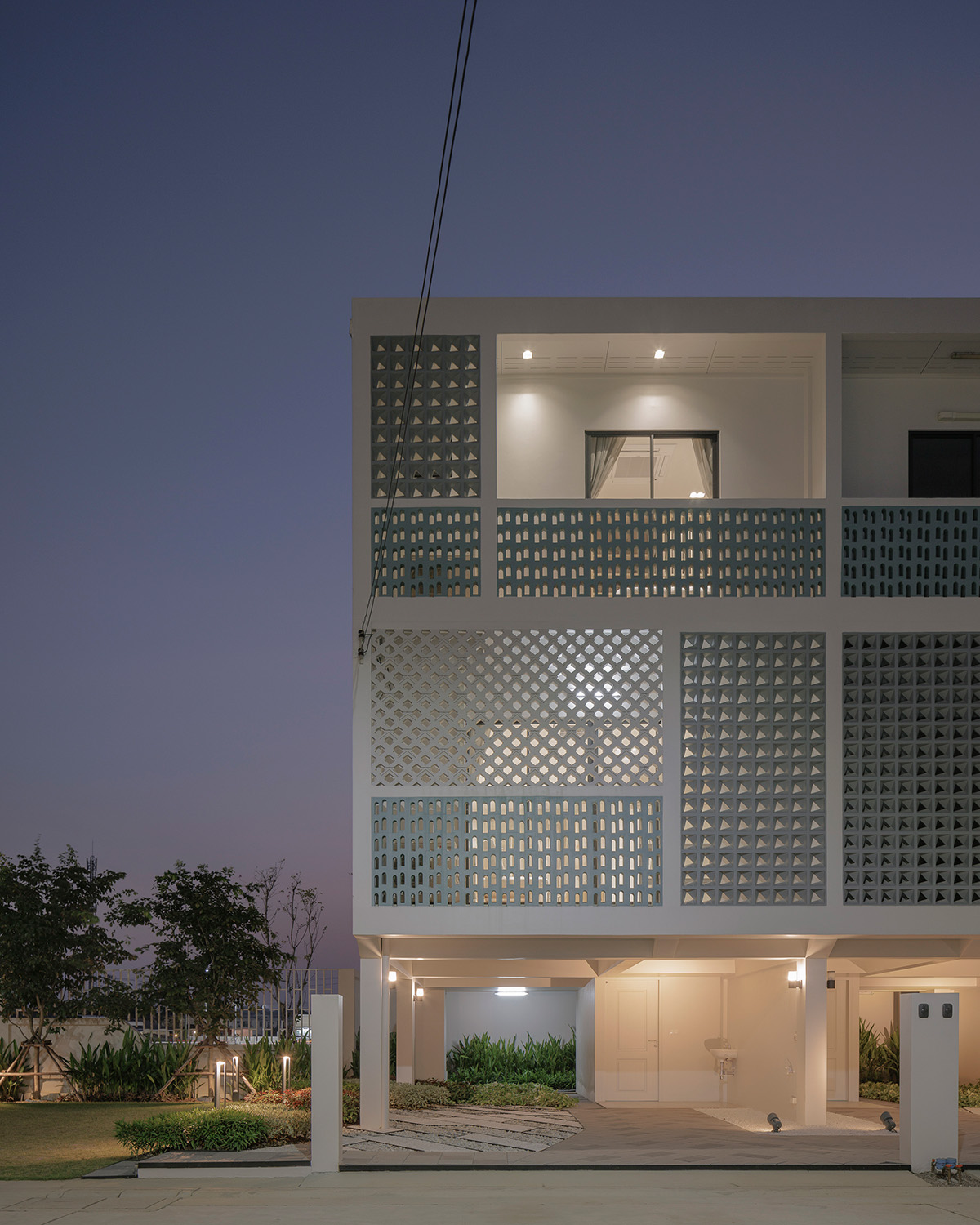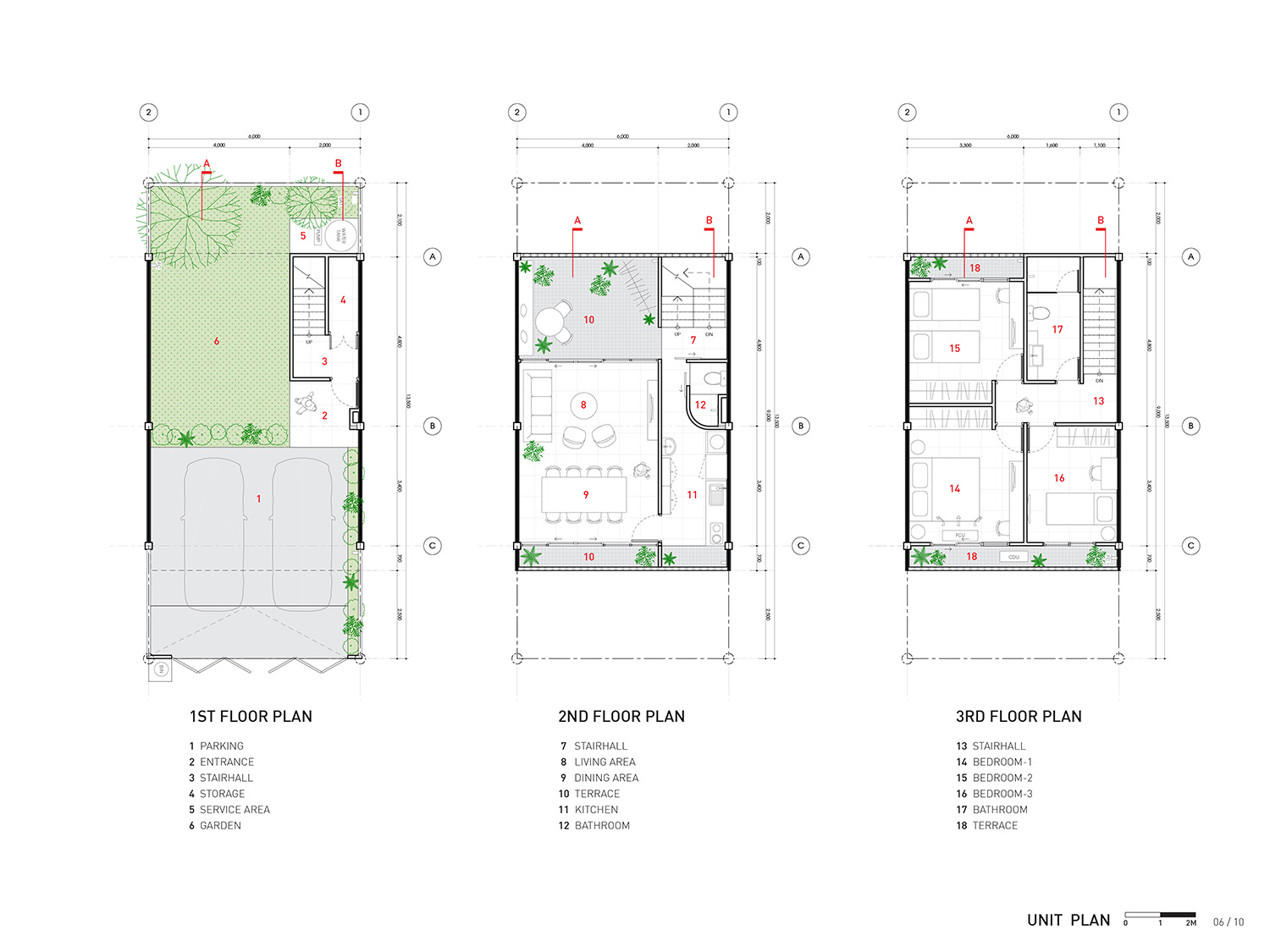Resilient Affordable Housing
Large swaths of Bangkok are expected to be regularly underwater by 2050. This increasingly severe flooding will disproportionately affect the city’s lower-middle class living on the periphery – historical agricultural lowlands where land is still affordable. With widening economic inequality and limited social housing policy, most residents of the city rely on privately developed housing with uneven design and construction standards.
This project comprises 333 row-house units designed for lower-middle-income residents on a typical, former agricultural lowland. The design anticipates future flooding conditions by adapting principles of vernacular amphibious living to contemporary tropical suburban life. To live with seasonal flooding, traditional houses in Southeast Asian floodplains are elevated several meters above ground. During the dry season, the space beneath serves multiple purposes, while during seasonal floods, life is elevated upstairs. The project adopts this strategy by leaving the ground level largely open, increasing permeable surface area. Main living functions occupy the two upper levels to remain above flood waters.
The housing achieves low energy consumption through passive cooling principles: natural cross-ventilation through north-south openings, vertical airflow via perforated floors and roof openings, and effective shading features. Mechanical cooling is necessary only during peak summer months.
The site planning accommodates contemporary local practices. With minimal ground-level construction, the area can be covered with plants. Furthermore, the gaps between the facade and interior walls serve as essential service zones and as urban gardens for growing edible herbs and vegetables, reducing reliance on store-bought ingredients. Semi-outdoor spaces for cooking and drying harness solar energy for preserving food and drying clothes instead of using electrical appliances.
On the front and back facade, concrete breeze blocks filter sunlight into interior spaces and maintain privacy without extensive use of curtains. The simple concrete block production and construction techniques engage small local contractors rather than large-scale factory precast operations. The construction process itself helps address inequality by providing employment opportunities for less privileged workers.
